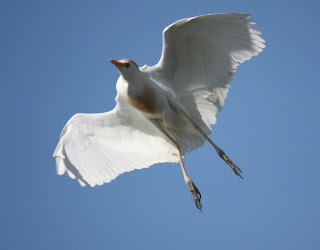 Gilly and I were up early to make the long journey down to Las Norias. The winds of the previous day had subsided thankfully and the sun was shining. We were greeted at the causeway on the Las Norias side by hundreds of Swifts, both Pallid and Common, A similar amount of Barn Swallows, plus a lesser number of Sand Martins. There were feeding on the millions of mosquitoes and midges. Gilly and I had sprayed ourselves liberally with protection so ended the day with only a couple of bites each.
Gilly and I were up early to make the long journey down to Las Norias. The winds of the previous day had subsided thankfully and the sun was shining. We were greeted at the causeway on the Las Norias side by hundreds of Swifts, both Pallid and Common, A similar amount of Barn Swallows, plus a lesser number of Sand Martins. There were feeding on the millions of mosquitoes and midges. Gilly and I had sprayed ourselves liberally with protection so ended the day with only a couple of bites each.

We then moved to our usual stopping place to the right of the "heronry". Due to the high water level the branches of the shrubs which extended above the water line were far too weak to support any nests or birds. The egrets and herons intelligently moved to a more overground area further to the right. We managed to get quite close to it through the greenhouses. The view wasn't brilliant, but we had good views of Night and Squacco Herons and Little and Cattle Egret. I surprised a Cattle Egret flying and managed to click the camera as he put on full air brakes! Passing Night Heron also got snapped.
At the causeway near to the plastic recycling centre the newly created gravelled island was completely submerged proving the water level was between 2-4ft higher than usual. A pair of Little Bitterns flew across the road very close to us. A family of Common Pochard swam by.
Gilly spotted a Gull-billed Tern on our way to Roquetas. Good and bad news here. The access at the end of Avenida de Cerrillos(?) is having a large wrought iron gated fitted with "No entry" signs for unauthorised vehicles. Good for the birds, but the trek to the good wader area, about 3km away would be beyond most birders, especially in the summer. We were beaten to the Red-knobbed Coot pond by a coach load of school kids, so there was nothing to see there. There were however large shallow puddles nearby proving feeding for small groups of Dunlin and Curlew Sandpipers. Ringed and Kentish Plovers, plus the loud Black-winged Stilts were also present. Ended with 44 species for the day.
 Gilly and I were up early to make the long journey down to Las Norias. The winds of the previous day had subsided thankfully and the sun was shining. We were greeted at the causeway on the Las Norias side by hundreds of Swifts, both Pallid and Common, A similar amount of Barn Swallows, plus a lesser number of Sand Martins. There were feeding on the millions of mosquitoes and midges. Gilly and I had sprayed ourselves liberally with protection so ended the day with only a couple of bites each.
Gilly and I were up early to make the long journey down to Las Norias. The winds of the previous day had subsided thankfully and the sun was shining. We were greeted at the causeway on the Las Norias side by hundreds of Swifts, both Pallid and Common, A similar amount of Barn Swallows, plus a lesser number of Sand Martins. There were feeding on the millions of mosquitoes and midges. Gilly and I had sprayed ourselves liberally with protection so ended the day with only a couple of bites each.




No hay comentarios:
Publicar un comentario